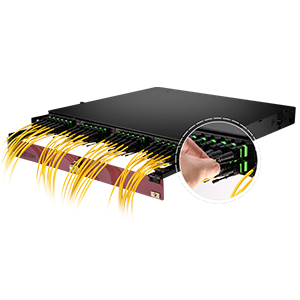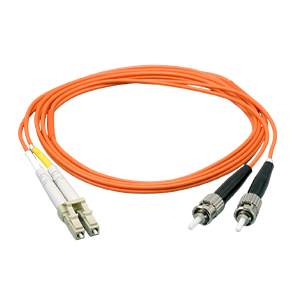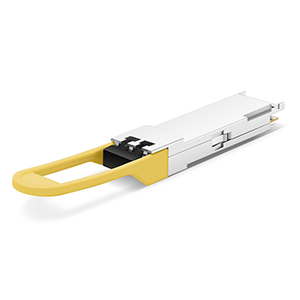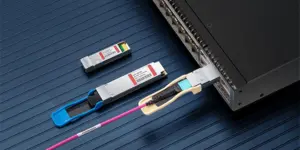Thank you for choosing to read this article. I will introduce you to MTP optical fiber and its important role in optical fiber communication. As a high-density optical fiber connection solution, MTP optical fiber has excellent advantages in achieving rapid deployment and high-capacity transmission, and is widely used in data centers, cloud computing, high-performance computing and other scenarios.
Overview of MTP Cables
MTP (Multi-Fiber Termination Push-On) optical fiber is a multi-fiber connector system used for high-density optical fiber transmission and connection. It was jointly developed by several fiber optic companies in the United States and recognized and standardized by the International Telecommunications Union (ITU) and the American National Standards Institute (ANSI).
The role of MTP fiber optics is to provide an efficient fiber optic connection solution for achieving high bandwidth and high density data transmission in fiber optic communications. It integrates multiple fiber cores (usually 12 or 24) in a single connector, effectively reducing the number of connectors and space occupation while providing a fast, reliable connection.
Advantages and features of MTP Cables
MTP optical fiber has many advantages and characteristics compared with traditional single-fiber optical fiber, including the following aspects:
-
High-density connection: MTP optical fiber uses multi-core optical fiber and MPO (Multi-Fiber Push-On) connector, which can integrate multiple fiber cores in a single connector. Compared with traditional single-fiber optical fiber connections, it can greatly increase the density of connection ports, save space and reduce the number of optical fiber connectors.
-
Rapid deployment: Since multiple fiber cores are integrated into the MTP optical fiber connector, multiple fiber cores can be connected at one time during deployment, saving installation and debugging time. This is very beneficial for large-scale fiber cabling and rapid network deployment.
-
Easy to manage: MTP fiber optic connectors provide a simplified and unified management method. By integrating multiple fiber cores into a single connector, the number and complexity of fiber optic connections can be reduced, making fiber optic cabling cleaner and easier to manage. In addition, MTP fiber optic connectors are usually equipped with color coding and labels to facilitate identification and management of different fiber cores.
-
High-speed transmission: MTP optical fiber supports high-bandwidth data transmission. It can meet the network needs of Gigabit Ethernet (GbE), 10 Gigabit Ethernet (10GbE) and even higher speeds. Its design and manufacturing meet the requirements of high-speed optical fiber transmission to ensure stable and reliable transmission of data.
-
Plug and pull performance: MTP fiber optic connector has good plug and pull performance, enabling reliable connection and disconnection. They are carefully designed and tested to withstand multiple plugging and unplugging operations without affecting connection quality, ensuring long-term stable performance.
In short, MTP optical fiber has the advantages and characteristics of high-density connection, rapid deployment, easy management, high-speed transmission and good plug-in performance compared to traditional single-fiber optical fiber. This makes it a fiber optic connectivity solution that meets high bandwidth, high density and reliability requirements and is widely used in applications such as data centers, high-speed networks and fiber optic sensing.
Application scenarios of MTP Cables
MTP fiber is widely used in the following application scenarios:
-
Data Center: Data centers require a large number of high-bandwidth connections to support fast data transfer between servers, storage devices and network equipment. MTP fiber’s high-density connectivity and rapid deployment make it an ideal choice in data centers. It meets data center needs for high density, performance and scalability.
-
Cloud computing: Cloud computing environments require high-speed, large-capacity data transmission to support large-scale data flows in cloud services and virtualized environments. The high-speed transmission capabilities of MTP optical fiber and the high-density characteristics of multi-core optical fiber make it a commonly used optical fiber connection solution in cloud computing. It can meet the needs of cloud computing environments for high bandwidth, high-density connections and rapid deployment.
-
High-performance computing: In the field of high-performance computing (HPC), high-speed, low-latency network transmission is required to support large-scale data processing and computing tasks. The high-speed transmission and low insertion loss characteristics of MTP fiber make it an ideal choice in HPC systems. It can provide high-density and reliable connections to meet the high-performance network requirements in the HPC field.
-
Large-capacity transmission: As the amount of data continues to increase, optical fiber connection solutions that can support large-capacity transmission are needed. MTP fiber’s multi-core fiber and high-density connectors can provide more fiber cores and connection ports to meet the needs of large-capacity transmission. It can support Fast Ethernet, Fiber Channel and other high-bandwidth applications, providing a reliable solution for large-scale data transmission.
In short, MTP optical fiber is widely used in application scenarios such as data centers, cloud computing, high-performance computing, and large-capacity transmission. Its high-density connectivity, rapid deployment, high-speed transmission, and reliability make it an ideal choice for high-bandwidth, high-density, and high-capacity transmission needs.
MTP Cables components and equipment
MTP fiber involves the following key components and equipment:
-
MTP connector: MTP connector is a key component in the MTP fiber optic system and is used to connect fiber optic jumpers or fiber optic cables. It is a multi-fiber connector that usually contains 12 or 24 fiber cores. MTP connector adopts push-type design, which can be quickly plugged and unplugged, providing reliable fiber optic connection.
-
MTP module: MTP module is a component used to convert MTP connectors into other types of connectors. It can convert MTP connectors into single-fiber connectors such as LC (Lucent Connector) or SC (Subscriber Connector) to connect with different types of devices. The MTP module provides compatibility and interface conversion functions.
-
Fiber optic jumpers: Fiber optic jumpers are fiber optic cables used to connect MTP connectors and other devices (such as fiber optic switches, routers, or servers). It usually has an MTP connector on one end, and on the other end it can be an MTP connector, LC connector, or other types of connectors to enable connections to different devices.
In terms of compatibility and interoperability, MTP optical fiber has good compatibility and can be seamlessly connected with other devices. MTP connectors can be interconnected with standard LC or SC connectors, making them compatible with common fiber optic equipment and network equipment. This means that MTP fiber can be used with fiber switches, routers, servers, and other standard fiber equipment to achieve flexible fiber cabling and connections.
In addition, MTP optical fiber also has broad compatibility in optical fiber transmission standards. It supports multiple optical fiber transmission standards, such as Gigabit Ethernet (GbE), 10 Gigabit Ethernet (10GbE), Fiber Channel (FC) and InfiniBand, making it suitable for different networks and application scenarios.
To sum up, the key components of MTP fiber include MTP connectors, MTP modules and fiber jumpers. They have good compatibility, can be interconnected with other optical fiber equipment, and support multiple optical fiber transmission standards to meet the needs of different application scenarios.
Deployment and configuration recommendations for MTP Cables
The deployment and configuration recommendations for MTP fiber are as follows:
Fiber optic cabling:
- Good planning and design: Adequate planning and design should be done before undertaking fiber optic cabling. Determine the best cabling paths and connection points, taking into account factors such as network needs, physical environment, and scalability.
- Use high-quality fiber: Choose reliable quality MTP fiber and fiber patch cord to ensure stable signal transmission and long-term reliability.
- Keep fiber optics clean: Clean fiber optic connectors regularly to prevent the build-up of dust, dirt, or grease that can affect signal quality.
Connect the device:
- Select compatible equipment: Ensure that the selected equipment such as fiber optic switches, routers or servers are compatible with MTP fiber optics and support the required fiber optic transmission standards and rates.
- Equipped with the appropriate module: As needed, select the appropriate MTP module to convert the MTP connector into the required connector type for connection with the target device.
Network optimization:
- Network topology optimization: According to network needs, optimize network topology and reduce fiber length and connection points to reduce signal loss and delay.
- Load balancing and redundancy: For demanding network environments, consider using load balancing and redundancy configurations to ensure improved reliability and performance.
Device selection and deployment strategy:
- Consider network requirements: Select appropriate MTP fiber optic equipment, such as 12-core or 24-core MTP connectors and fiber optic patch cords, based on network bandwidth, transmission distance, and number of connection ports.
- Flexibility and scalability: Consider future expansion needs and select equipment that supports flexible configuration and scalability to facilitate network upgrades and expansion.
In short, when deploying MTP optical fiber, sufficient planning and design should be carried out, high-quality optical fiber and compatible equipment should be selected, and network optimization should be carried out. Select appropriate equipment and deployment strategies based on specific network needs to achieve stable, reliable and high-performance fiber optic networks.
Summarize:
In the future, with the development of emerging technologies and applications, such as 5G networks, the Internet of Things and optical fiber communication standards, MTP optical fiber will continue to play an important role in meeting the growing network needs and providing higher bandwidth and reliability. The market prospect of MTP optical fiber is very broad, and industry trends, competition landscape and market size all show its huge potential. We also provide some actual MTP fiber application cases, demonstrating its successful application in different industries.
If you are interested in MTP Cables, please consider contacting us, we will provide you with professional advice and support to help you choose the MTP fiber optic solution that suits your needs to achieve high-density fiber optic connections and high-performance network transmission.
MTP Cables FAQ
An MTP (Multi-Fiber Termination Push-on) cable is a high-density fiber optic cable that uses a connector called the MTP connector. It is designed to accommodate multiple fibers within a single connector, allowing for efficient and compact fiber connectivity in data center and telecommunications environments.
MPO (Multi-fiber Push-on) and MTP (Multi-fiber Termination Push-on) cables are often used interchangeably, but technically, MTP is a registered trademark of US Conec, which manufactures high-precision MPO connectors. MPO refers to the generic term for multi-fiber connectors, while MTP specifically refers to connectors manufactured by US Conec. In practice, MPO and MTP cables are similar and can be used interchangeably in most applications.
In networking, MTP (Multi-fiber Termination Push-on) refers to the high-density fiber optic connectors and cables used to establish reliable and efficient fiber optic connections within data centers, telecommunication networks, and other high-bandwidth environments. MTP connectors and cables enable quick and easy deployment of multiple fiber connections, saving time and space in complex network architectures.
An MPO (Multi-fiber Push-on) fiber cable is a high-density fiber optic cable that uses the MPO connector. It contains multiple fibers within a single connector, allowing for simultaneous connections and data transmission. MPO fiber cables are commonly used in data centers, telecommunications, and high-speed networking applications.
MTP (Multi-fiber Termination Push-on) technology is used in various applications that require high-density fiber connectivity. It is commonly used in data centers, telecommunications networks, backbone infrastructure, cloud computing environments, and high-speed networking applications where efficient and compact fiber connections are essential.
Yes, MPO (Multi-fiber Push-on) and MTP (Multi-fiber Termination Push-on) connectors are generally compatible and can be used interchangeably. MTP connectors, being a specific brand of MPO connectors, adhere to strict manufacturing standards to ensure high-quality and precise connections. However, it is always recommended to verify compatibility between different manufacturers and connector types to ensure proper performance.
In electronics, MTP (Media Transfer Protocol) refers to a communication protocol used for transferring media files between electronic devices such as cameras, smartphones, and computers. It allows for seamless transfer of photos, videos, and audio files, and is commonly used for media synchronization and file management.
MTP (Multi-fiber Termination Push-on) connectors and cables are used for their high-density and efficient connectivity capabilities. They enable quick and easy deployment of multiple fiber connections, reducing installation time and saving space in network infrastructure. MTP connectors also provide reliable and high-performance connections, making them suitable for high-bandwidth applications in data centers, telecommunications, and networking environments.
MTP (Multi-fiber Termination Push-on) and PTP (Point-to-Point) are different types of fiber optic connections. MTP connections involve multi-fiber connectors, allowing for simultaneous connections between multiple fibers. These connections are commonly used in high-density environments like data centers. PTP connections, on the other hand, refer to single-fiber connections between two devices, typically used in point-to-point communication scenarios.






